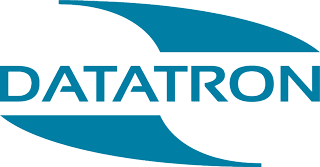How to create a document control system
What is document control, and what is it for?
Document control ensures that all information in your organisation is current and accounted for; internally or externally, everyone is accessing the same version of a document. Document control policies and procedures guide document creation, review, approval, and distribution and establish best storage, retrieval, and disposal practices.
A document control system is vital for consistently, compliantly and effectively handling information. This blog outlines how to turn your document management challenges into an efficient document control system.
How do I Set Up a Document Control System?
Understanding your needs
To implement transparent and effective document control, it's essential to outline your specific document management needs. Consider the following questions during the design process:
- Industry-Specific Regulations: Identify the industry regulations and compliance requirements that govern your documents. Understand the specific rules and standards you must adhere to, such as data privacy regulations (GDPR).
- Movement and Storage: Determine how often documents change location and their final destination. Consider document transfers between departments, off-site storage requirements, and retention periods. This will help you plan for efficient document tracking and storage solutions.
- Document Workflows: Analyse the stages involved in your document workflows. Identify how documents move through various processes, including creation, review, approval, distribution, and archiving. Determine if documents need to be checked in and checked out regularly and if edits are frequently made.
- Categories and Naming Convention: Establish a logical structure and consistent naming convention for your documents. Define categories that reflect your organisational needs, making locating and retrieving documents easy. Consistency in naming conventions ensures uniformity and efficiency.
- Access Requirements: Determine the access restrictions and permissions for each stage of the document lifecycle. Consider who should have read, write, or edit access, and implement appropriate security measures. Additionally, assess whether certain documents require redactions or different versions visible to specific individuals.
- Transformation: Decide whether your documents will be stored digitally, physically, or both. Consider if there is a need to digitise physical documents. If so, ensure your document management system can track records during the digitisation process and maintain their integrity.
You can design a document control system by translating these requirements into measurable goals. Regularly reviewing these goals ensures the system meets your evolving needs and remains effective and transparent.
Selecting a document management software
When selecting a document management software, you should keep several industry considerations and tracking goals in mind. Here are some factors to consider:
- Compliance: Ensure your software aligns with the necessary regulations and standards. If your industry requires document retention for compliance purposes, the software should provide features for managing retention policies. The status of each record should be tracked in the system.
- Integration: Consider the ability to integrate with other tools and systems. Seamless integration with existing workflows and applications can enhance productivity and efficiency.
- Scalability: Can It handle increasing document volumes and user demands without sacrificing performance?
- Accessibility: Ensure the software allows easy access to documents from multiple devices and locations. Cloud-based solutions are often preferred as they provide remote access and collaboration capabilities.
- Security: Document security is crucial to protect sensitive information. Look for software with strong encryption, access controls, user permissions, and audit trails to track document activities.
Metadata Management
Different software solutions have varying capabilities for recording and utilising metadata. Determine your organisation's specific metadata requirements that allow you to locate and retrieve documents quickly. Ad-hoc search functionality and dynamic document groups are valuable features for efficient document management.
Establishing document control policies and procedures
By considering the following standards when selecting document management software, you can ensure a more comprehensive and compliant document control system.
- ISO27001 provides a framework for organisations to establish, implement, maintain, and continually improve their information security processes. Ensuring compliance with ISO 27001 can help address security concerns.
- ISO9001 is an international standard on quality management systems that emphasises the importance of document control and its impact on overall quality management. A robust system can contribute to maintaining high-quality customer service by ensuring accurate, up-to-date, and controlled documentation.
- BS10008 addresses the legal admissibility of electronically stored information. It provides guidelines for managing electronic documents to ensure their integrity and trustworthiness for legal purposes.
How do Document Management Systems Deal with Document Version Control?
Document version control ensures users access the correct copy by making a record of all changes and generating an audit trail. A new version is created when a document is updated, and the system tracks the changes made. This allows users to view the complete history of a document, including all modifications, revisions, and updates.
Document management systems also typically include features such as check-in and check-out, which allow users to lock documents. At the same time, they are being edited, ensuring that multiple users do not work on the same paper simultaneously. This helps to prevent conflicts and errors and ensures that changes are tracked accurately.
EDMS does it all
At Datatron we work with you to digitise and constantly develop your processes, while offering round the clock support.
With years of experience solving physical problems with digital solutions, we guarantee each of our services evolve and scale along side your business.
Begin your digital transformation journey today by booking a consultation or giving us a call!


